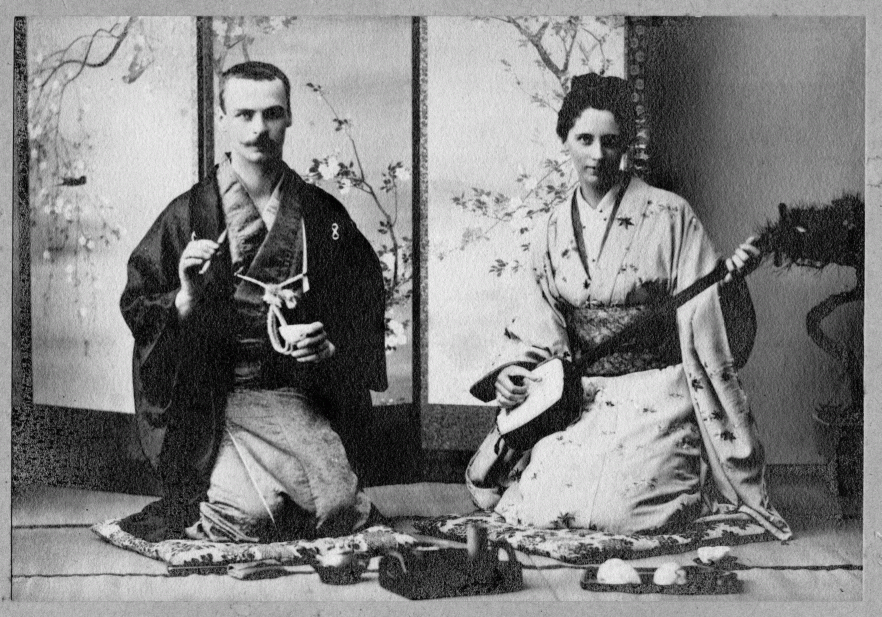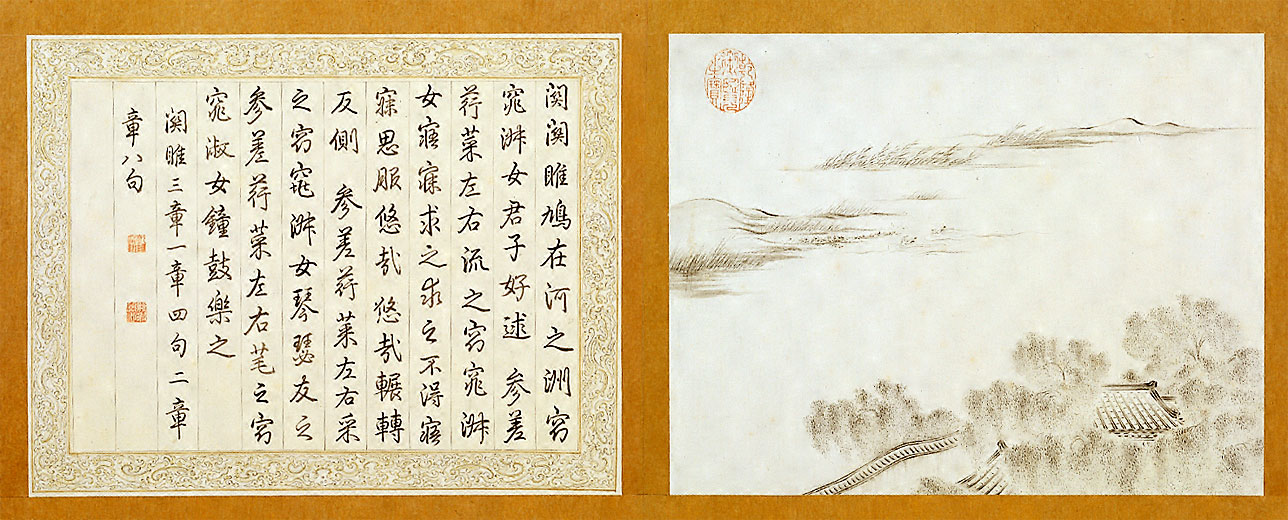|
Г‰douard Chavannes
Г‰mmanuel-Г‰douard Chavannes (5 October 1865 – 29 January 1918) was a French sinologist and expert on Chinese history and religion, and is best known for his translations of major segments of Sima Qian's ''Records of the Grand Historian'', the work's first ever translation into a Western language. Chavannes was a prolific and influential scholar, and was one of the most accomplished Sinologists of the modern era notwithstanding his relatively early death at age 52 in 1918. A successor of 19th century French sinologists Jean-Pierre Abel-RГ©musat and Stanislas Julien, Chavannes was largely responsible for the development of Sinology and Chinese scholarship into a respected field in the realm of French scholarship. Life and career Г‰douard Chavannes was born on 5 October 1865 in Lyon, France. As a youth he studied at the ''lycГ©e'' in Lyon, where, like most students of his era, his education focused mainly on the Latin and Greek classics. Chavannes was then sent to Par ... [...More Info...] [...Related Items...] OR: [Wikipedia] [Google] [Baidu] [Amazon] |
Lyon, France
Lyon (Franco-Provençal: ''Liyon'') is a city in France. It is located at the confluence of the rivers Rhône and Saône, to the northwest of the French Alps, southeast of Paris, north of Marseille, southwest of Geneva, Switzerland, northeast of Saint-Étienne. The City of Lyon is the third-largest city in France with a population of 522,250 at the Jan. 2021 census within its small municipal territory of , but together with its suburbs and exurbs the Lyon metropolitan area had a population of 2,308,818 that same year, the second largest in France. Lyon and 58 suburban municipalities have formed since 2015 the Metropolis of Lyon, a directly elected metropolitan authority now in charge of most urban issues, with a population of 1,424,069 in 2021. Lyon is the prefecture of the Auvergne-Rhône-Alpes region and seat of the Departmental Council of Rhône (whose jurisdiction, however, no longer extends over the Metropolis of Lyon since 2015). The capital of the Gauls during th ... [...More Info...] [...Related Items...] OR: [Wikipedia] [Google] [Baidu] [Amazon] |
LycГ©e
In France, secondary education is in two stages: * ''CollГЁges'' () cater for the first four years of secondary education from the ages of 11 to 14. * ''LycГ©es'' () provide a three-year course of further secondary education for students between the ages of 15 and 19. Pupils are prepared for the '' baccalaurГ©at'' (; baccalaureate, colloquially known as ''bac'', previously ''bachot''), which can lead to higher education studies or directly to professional life. There are three main types of ''baccalaurГ©at'': the ''baccalaurГ©at gГ©nГ©ral'', ''baccalaurГ©at technologique'' and ''baccalaurГ©at professionnel''. School year The school year starts in early September and ends in early July. Metropolitan French school holidays are scheduled by the Ministry of Education by dividing the country into three zones (A, B, and C) to prevent overcrowding by family holidaymakers of tourist destinations, such as the Mediterranean coast and ski resorts. Lyon, for example, is in zone A, Marseill ... [...More Info...] [...Related Items...] OR: [Wikipedia] [Google] [Baidu] [Amazon] |
INALCO
Institut national des langues et civilisations orientales (; ), abbreviated as INALCO, is a French Grand Etablissement with a specializing in the teaching of languages and cultures from the world. Its coverage spans languages of Central Europe, Africa, Asia, America, and Oceania. With 104 languages taught as of 2024, this institution is currently the world's largest provider of language training courses. It is also informally called ''Langues’O'' () in French, an abbreviation for ''Langues orientales''. The INALCO logo is made up of the school's acronym, each part of which is translated into languages written in non-Latin characters, corresponding to Inalco's fields of teaching and research. History * 1669 Jean-Baptiste Colbert founds the ''École des jeunes de langues'' language school * 1795 The ''École spéciale des langues orientales'' (Special School for Oriental Languages) is established * 1873 The two schools merge * 1914 The school is renamed the ''École nat ... [...More Info...] [...Related Items...] OR: [Wikipedia] [Google] [Baidu] [Amazon] |
Mandarin Chinese
Mandarin ( ; zh, s=, t=, p=GuДЃnhuГ , l=Mandarin (bureaucrat), officials' speech) is the largest branch of the Sinitic languages. Mandarin varieties are spoken by 70 percent of all Chinese speakers over a large geographical area that stretches from Yunnan in the southwest to Xinjiang in the northwest and Heilongjiang in the northeast. Its spread is generally attributed to the greater ease of travel and communication in the North China Plain compared to the more mountainous south, combined with the relatively recent spread of Mandarin to frontier areas. Many varieties of Mandarin, such as Southwestern Mandarin, those of the Southwest (including Sichuanese dialects, Sichuanese) and the Lower Yangtze Mandarin, Lower Yangtze, are not mutually intelligible with the Beijing dialect (or are only partially intelligible). Nevertheless, Mandarin as a group is often placed first in lists of languages by number of native speakers (with nearly one billion). Because Mandarin originated in ... [...More Info...] [...Related Items...] OR: [Wikipedia] [Google] [Baidu] [Amazon] |
Classical Chinese
Classical Chinese is the language in which the classics of Chinese literature were written, from . For millennia thereafter, the written Chinese used in these works was imitated and iterated upon by scholars in a form now called Literary Chinese, which was used for almost all formal writing in China until the early 20th century. Each written character corresponds to a single spoken syllable, and almost always to a single independent word. As a result, the characteristic style of the language is comparatively terse. Starting in the 2nd century CE, use of Literary Chinese spread to the countries surrounding China, including Vietnam, Korea, Japan, and the Ryukyu Islands, where it represented the only known form of writing. Literary Chinese was adopted as the language of civil administration in these countries, creating what is known as the Sinosphere. Each additionally developed systems of readings and annotations that enabled non-Chinese speakers to interpret Literary ... [...More Info...] [...Related Items...] OR: [Wikipedia] [Google] [Baidu] [Amazon] |
Chinese Philosophy
Chinese philosophy (Simplified Chinese characters, simplified Chinese: дёе›Ѕе“Іе¦; Traditional Chinese characters, traditional Chinese: дёењ‹е“Іеё) refers to the philosophical traditions that originated and developed within the historical and cultural context of China. It encompasses systematic reflections on issues such as existence, knowledge, ethics, and politics. Evolving over more than two millennia, Chinese philosophy includes classical traditions such as Confucianism, Taoism, Daoism, and Buddhism, as well as modern responses to Western philosophical currents. As a cultural form of philosophy, it addresses universal philosophical concerns while also reflecting the specific historical and social conditions of China. The historical development of Chinese philosophy began during the Spring and Autumn period, Spring and Autumn and Warring States period, Warring States periods, a time known as the "Hundred Schools of Thought". Major schools such as Confucianism, Taoism, Da ... [...More Info...] [...Related Items...] OR: [Wikipedia] [Google] [Baidu] [Amazon] |
Archaeologist
Archaeology or archeology is the study of human activity through the recovery and analysis of material culture. The archaeological record consists of Artifact (archaeology), artifacts, architecture, biofact (archaeology), biofacts or ecofacts, archaeological site, sites, and cultural landscapes. Archaeology can be considered both a social science and a branch of the humanities. It is usually considered an independent academic discipline, but may also be classified as part of anthropology (in North America – the four-field approach), history or geography. The discipline involves Survey (archaeology), surveying, Archaeological excavation, excavation, and eventually Post excavation, analysis of data collected, to learn more about the past. In broad scope, archaeology relies on cross-disciplinary research. Archaeologists study human prehistory and history, from the development of the first stone tools at Lomekwi in East Africa 3.3 million years ago up until recent decades. A ... [...More Info...] [...Related Items...] OR: [Wikipedia] [Google] [Baidu] [Amazon] |
Georges Perrot
Georges Perrot (12 November 1832 – 30 June 1914) was a French archaeologist. He taught at the Sorbonne from 1875 and was director of the Г‰cole Normale SupГ©rieure from 1888 to 1902. In 1874 he was elected to the Academie des Inscriptions et Belles-Lettres, where he served as the permanent secretary from 1904 until his death. Dictionary of Art Historians After discovering in 1857 a first fragment of the , his most famous archaeological discovery was made while on an expedition to in 1861, where he found a |
Philosophy
Philosophy ('love of wisdom' in Ancient Greek) is a systematic study of general and fundamental questions concerning topics like existence, reason, knowledge, Value (ethics and social sciences), value, mind, and language. It is a rational and critical inquiry that reflects on its methods and assumptions. Historically, many of the individual sciences, such as physics and psychology, formed part of philosophy. However, they are considered separate academic disciplines in the modern sense of the term. Influential traditions in the history of philosophy include Western philosophy, Western, Islamic philosophy, Arabic–Persian, Indian philosophy, Indian, and Chinese philosophy. Western philosophy originated in Ancient Greece and covers a wide area of philosophical subfields. A central topic in Arabic–Persian philosophy is the relation between reason and revelation. Indian philosophy combines the Spirituality, spiritual problem of how to reach Enlightenment in Buddhism, enlighten ... [...More Info...] [...Related Items...] OR: [Wikipedia] [Google] [Baidu] [Amazon] |
AgrГ©gation
In France, the () is the most competitive and prestigious examination for civil service in the French public education A state school, public school, or government school is a primary school, primary or secondary school that educates all students without charge. They are funded in whole or in part by taxation and operated by the government of the state. State-f ... system. Successful candidates become ''professeurs agrГ©gГ©s'' () and are usually appointed as teachers in Secondary education in France, secondary schools or Classe prГ©paratoire aux grandes Г©coles, preparatory classes, or as lecturers in universities. Context Originating from the 18th century, the is a highly prestigious and competitive examination. The level of selectivity varies between disciplines: every year, the French Ministry of National Education (France), Ministry of National Education determines and publishes a list of annual quotas for each discipline. There are about 300 to 400 positions open each ... [...More Info...] [...Related Items...] OR: [Wikipedia] [Google] [Baidu] [Amazon] |
Г‰cole Normale SupГ©rieure
Г‰cole or Ecole may refer to: * an elementary school in the French educational stages normally followed by Secondary education in France, secondary education establishments (collГЁge and lycГ©e) * Г‰cole (river), a tributary of the Seine flowing in rГ©gion ГЋle-de-France * Г‰cole, Savoie, a French commune * Г‰cole-Valentin, a French commune in the Doubs dГ©partement * Grandes Г©coles, higher education establishments in France * The Г‰cole, a French-American bilingual school in New York City * Ecole Software, a Japanese video-games developer/publisher {{disambiguation, geo ... [...More Info...] [...Related Items...] OR: [Wikipedia] [Google] [Baidu] [Amazon] |
Grandes Г‰coles
Grandes may refer to: *AgustГn MuГ±oz Grandes, Spanish general and politician * Banksia ser. Grandes, a series of plant species native to Australia * Grandes y San MartГn, a municipality located in the province of ГЃvila, Castile and LeГіn, Spain *Grandes (islands) Grandes () is a group of three small islands off the east coast of Crete. Administratively it comes within the Itanos municipality in Lasithi. Grandes can be seen from the Minoan site of Roussolakkos near Palekastro as can the island of E ..., a group of three small islands in the Aegean Sea off the east coast of Crete * ''Grandes'' (album), by ManГЎ {{disambig, geo, surname ... [...More Info...] [...Related Items...] OR: [Wikipedia] [Google] [Baidu] [Amazon] |





